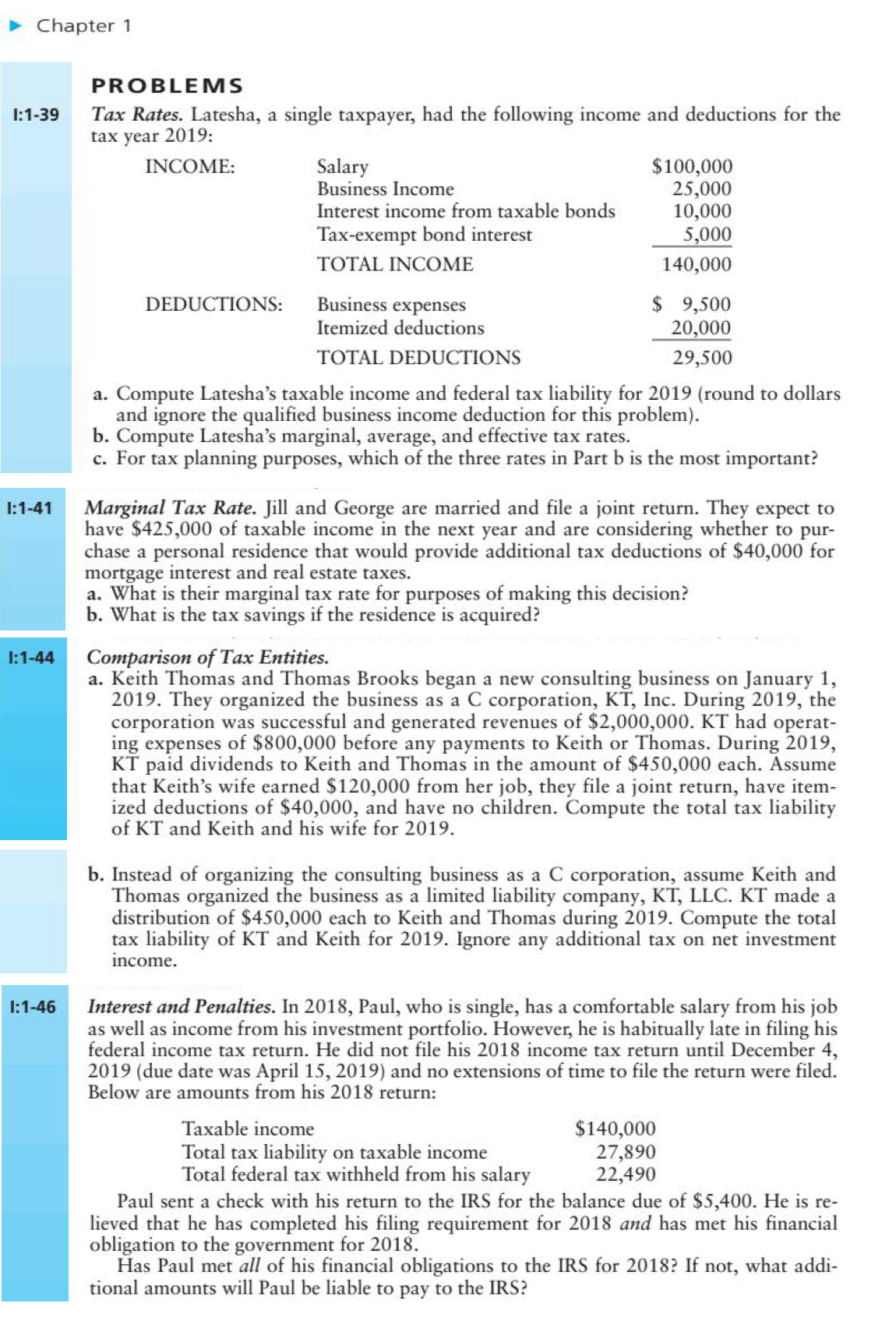Answered step by step
Verified Expert Solution
Question
1 Approved Answer
PROBLEMS I: 1 - 3 9 Tax Rates. Latesha, a single taxpayer, had the following income and deductions for the tax year 2 0 1
PROBLEMS
I:
Tax Rates. Latesha, a single taxpayer, had the following income and deductions for the
tax year :
a Compute Latesha's taxable income and federal tax liability for round to dollars
and ignore the qualified business income deduction for this problem
b Compute Latesha's marginal, average, and effective tax rates.
c For tax planning purposes, which of the three rates in Part b is the most important?
Marginal Tax Rate. Jill and George are married and file a joint return. They expect to
have $ of taxable income in the next year and are considering whether to pur
chase a personal residence that would provide additional tax deductions of $ for
mortgage interest and real estate taxes.
a What is their marginal tax rate for purposes of making this decision?
b What is the tax savings if the residence is acquired?
Comparison of Tax Entities.
a Keith Thomas and Thomas Brooks began a new consulting business on January
They organized the business as a C corporation, KT Inc. During the
corporation was successful and generated revenues of $ KT had operat
ing expenses of $ before any payments to Keith or Thomas. During
KT paid dividends to Keith and Thomas in the amount of $ each. Assume
that Keith's wife earned $ from her job, they file a joint return, have item
ized deductions of $ and have no children. Compute the total tax liability
of KT and Keith and his wife for
b Instead of organizing the consulting business as a C corporation, assume Keith and
Thomas organized the business as a limited liability company, KT LLC KT made a
distribution of $ each to Keith and Thomas during Compute the total
tax liability of KT and Keith for Ignore any additional tax on net investment
income.
Interest and Penalties. In Paul, who is single, has a comfortable salary from his job
as well as income from his investment portfolio. However, he is habitually late in filing his
federal income tax return. He did not file his income tax return until December
due date was April and no extensions of time to file the return were filed.
Below are amounts from his return:
Paul sent a check with his return to the IRS for the balance due of $ He is re
lieved that he has completed his filing requirement for and has met his financial
obligation to the government for
Has Paul met all of his financial obligations to the IRS for If not, what addi
tional amounts will Paul be liable to pay to the IRS?

Step by Step Solution
There are 3 Steps involved in it
Step: 1

Get Instant Access to Expert-Tailored Solutions
See step-by-step solutions with expert insights and AI powered tools for academic success
Step: 2

Step: 3

Ace Your Homework with AI
Get the answers you need in no time with our AI-driven, step-by-step assistance
Get Started


